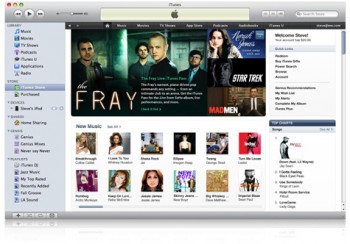U.S. Music Market To Grow 5.5% By 2016, Digital to Overtake Physical Sales
Via Billboard:
This year will mark the first time digital distribution revenue will overtake physical distribution in U.S. music sales, according to Pricewaterhouse Coopers’ Entertainment & Media Outlook 2012-2016, issued Tuesday. The continued rise of subscription-based streaming music services and digital downloads are projected to help the U.S. music market rise to $19.8 billion by 2016, a 5.5% increase from the $15.2 billion in 2011. Additionally, radio is projected to total $22.5 billion in 2016, a 4.1% increase from 2011, on the strength of increased spending on broadcast, satellite and online radio advertising.
“If you go back to 2007, 2008 and 2009, we’re at the end of a cycle where tremendous recorded music sales really drove the industry,” says Greg Boyer, PwC’s managing director of entertainment, media and communications. “After the 38 to 40% downturn over that rough period, the innovation, access and ability of subscription services is fueling the ability to at the very least get back to very healthy revenue numbers. It’s also providing unique opportunities for artists, for the labels, and unique opportunities for other companies that are growing up in that new environment.”
Declines in physical distribution will continue over the next five years, albeit at single-digit percentage rates, dropping from $3.4 billion in 2011 to $2.2 billion at an 8.0% compound annual decrease. Digital distribution, buoyed by a boost from streaming services, will rise at an 11.7% compound annual rate to $5.5 billion in 2016 from $3.1 billion in 2011. Total spending on recorded music will rise at a 3.4% compound annual rate to $7.7 billion in 2016, from $6.5 billion in 2011.
Live music will also see growth during the time period, with spending on concerts and music festival expected to expand at a 7% compound annual from from $8.7 billion in 2011 to $12.2 billion in 2016. Live music is also attributed as the leading factor for the U.S. music market’s 3.4% growth in 2011, with a return in concert ticket revenues making up for the declines in recorded music sales.
One revenue source not included in PwC’s report is commercial synch revenue, which IFPI included for the first time in its global “Recording Industry In Numbers” report this March. “It’s not included in our base projections, but it’s certainly a growing aspect of the business,” says Boyer. “More importantly, it’s one of the more stable parts of the business you can really depend on. With the recent M&A activity in music and how some of that has been priced into the market, specifically on the publishing and licensing side, you’re seeing very significant valuations related to the recorded music companies because of the stability of those revenues. I think you’ll see that continue as a core part of the next evolution of how the value of the labels and and the record companies is determined.”
On the radio front, 2012 will see a return of ad revenue after terrestrial ads declined 0.1% in 2011. Automotive and political spending will drive much of the growth this year, which will eventually slow down to a 3.0% compound annual increase to $18.2 billion by 2016, compared to $15.7 billion in 2011. Broadcast advertising will increase at a 2.7% compound rate through 2016, while online will grow by 11.5% during the same time period from $465 million in 2011 to $802 million in 2016. Satellite radio advertising will also rise from $74 million in 2011 to $116 million, at a 9.4% compound annual increase, with satellite-radio subscription spending expanding from $2.6 billion in 2011 to $4.1 billion in 2016. –Allindstrom

